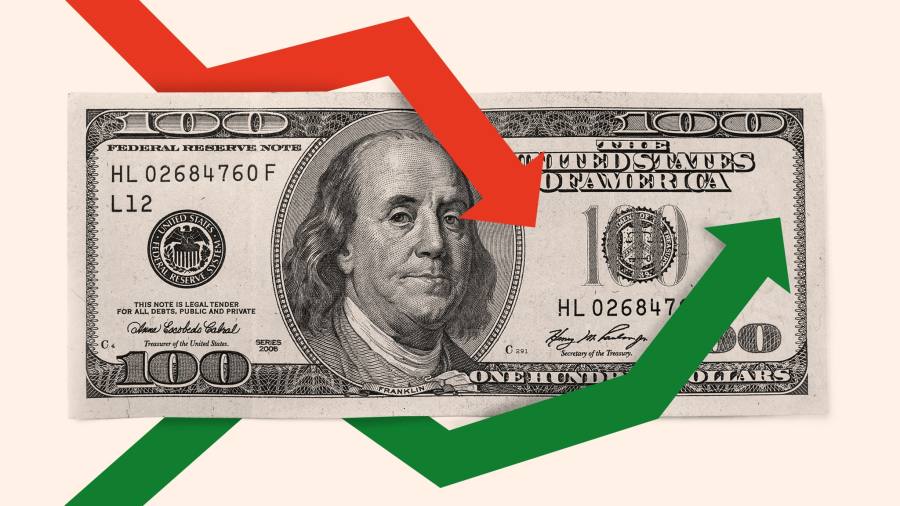Today we need to talk about something you might find hard to confront: home-country bias.
For most of us, that means preferring to invest in U.S. stocks and not bother with other global markets.
Right now, I believe it’s a mistake to hold this bias.
I’ve looked at the data … and my conclusion is you should own more foreign stocks than you likely do right now.
You should add some additional exposure to Europe, Japan and … hold your nose here … China.
If that sounds unthinkable to you, read on closely.
Because today’s Banyan Edge is all about recognizing and overcoming home-country bias.
To do that, I’ll share my recent findings about the opportunities in other countries … and why they could eclipse what we’re seeing in U.S. markets — at least over the next several years.
But first, let’s really drill down into where these biases come from, and how to set them aside to see the bigger picture…
What Is Home-Country Bias?
We all like to believe we think 100% rationally every time we make an investment decision.
The truth is, though, we all possess hard-wired biases that can lead to bad calls.
I’ll start by putting myself in the “biased” camp, along with you. Here’s the perfect example…
I wrote last week to my 10X Stocks subscribers about how “the broader market” is at an important inflection point.
Then I caught myself, because what I really meant to say is that the S&P 500 is at an inflection point. That was my home-country bias in action.
In the most general sense, the aggregate movement of all equities of every country is actually “the broader stock market.”
But alas, I’m an American … so, to me, I’m tempted to think the U.S. stock market is “the broader stock market.”
That is essentially what home-country bias is … the tendency to think the stocks of your home country are the “end all be all” … and that you should only own those stocks in your portfolio.
It’s not just you, me and your neighbor who does this … it’s a global phenomenon.
Have a look:
(Click here to view larger image.)
I’ve shown my readers this chart many times before. Every time I do, I’m amazed…
Australian stocks make up a scant 2.4% of the global equity markets, yet Australian investors put 66% of their money into Australian stocks.
It’s the same disproportionate picture in Canada, Japan and the U.K. too.
And the same is true in the United States — though, since the market cap of U.S. stocks is greater than 50% of the global market cap, the home-country bias effect isn’t as evident or egregious as it is in much smaller countries.
Still, Americans disproportionately prefer to own U.S. stocks.
Why?
The answer is simple: U.S. stocks always outperform foreign stocks.
…Right?
Actually, not right.
U.S. stocks don’t always outperform foreign stocks.
In fact, a chart from JPMorgan’s Guide to the Markets shows the back-and-forth nature of outperformance between U.S. and European, Australian, Asian and Far East (EAFE) stocks over the last 50 years:

(Click here to view larger image.)
One reason many U.S. investors believe U.S. stocks are alwaysa better investment than foreign stocks is because U.S. stocks have massively outperformed since the 2009 bottom.
The chart above shows periods of U.S. stock outperformance in grey. Note how the most recent period is both the longest (15-plus years) and the strongest (up 275% at its peak) of all periods of U.S. outperformance since the 1970s.
This brings up another bias — recency bias. This is the tendency to assume that recent data and trends are representative of the longer arc of history … and thus likely to continue indefinitely.
But this chart shows that outperformance is cyclical. For the past 50 years, the baton has passed back and forth between U.S. stocks and foreign stocks every five years on average.
So, if this is true, why do Americans prefer investing in U.S. stocks?
The answer clearly isn’t because they always outperform…
The answer is more likely that Americans feel more comfortable owning the stocks of our own country.
This could be because we feel like we better understand the value of the business … or perhaps simply because it feels patriotic to invest in American companies.
Either way, investors who act on the home-country bias do so at the cost of underperformance during certain periods.
Just look again at the chart above… If you’d invested outside the U.S. between 2001 and 2007 … you would’ve made 64% more than if you invested solely in U.S. stocks.
Likewise, between 1983 and 1989, you would’ve passed on an additional 374% return!
That’s downright foolish to ignore, if you ask me.
Look, when I vote at the polls … I vote for who I believe will maintain and bolster America’s position as the greatest country in the world.
And on July Fourth, Veteran’s Day and Memorial Day … I wave our great nation’s flag as proudly as the next guy.
But when it comes down to making money in the stock market, I’m not willing to leave good money on the table just to feel comfortable or patriotic.
I know there are periods of time when conditions warrant investing outside the United States too … and I’m more than willing to do it.
I also believe we’re likely entering one of those periods now…
The Bull Case for “Unpatriotic” Stocks
In JPMorgan’s chart of the cyclical outperformance of U.S. and foreign stocks, it notes how “regime change” is determined when there is a sustained outperformance of one region over the other for a cumulative 12 months.
As I see it … JPMorgan will be calling that “regime change” any day now.
Over the past 12 months:
- The SPDR S&P 500 ETF (SPY) is down 7.6%.
- The iShares MSCI All-Country World Index ex-U.S. ETF (ACWX) is down 6.6%.
That means foreign stocks have outperformed U.S. stocks over the past year.
“But wait, not fair!” you may object. Is “losing less” really the type of “outperformance” that should make me want to buy into foreign stocks?
In a word, yes — because losing less in down markets has a great impact on your long-run success as an investor.
If that doesn’t convince you, consider this…
Here’s the relative performance of the stock markets of the top 15 global economies (excluding Russia) since the October 13 low last year:

(Click here to view larger image.)
And I’m not cherry-picking a favorable time frame, here. Even if you look back six months, we see the same picture — U.S. stocks have been falling behind:

(Click here to view larger image.)
I’m sure you’re wondering why this shift toward the outperformance of stocks outside the U.S. is happening…
And, just as importantly, if it will persist.
As for the why, I’ll note three factors likely at play here:
- Since the outperformance relationship has historically been cyclical, foreign stocks were simply “due” for a turn with the outperformance baton. Not a super satisfying answer, but sometimes the simplest explanation is the right one.
- Foreign equities have historically performed best in “weak dollar” environments. The U.S. dollar index peaked on September 28, 2022, and has now lost nearly half of the gains it made during its epic climb that began in early 2021. The weakening dollar has likely acted as a tailwind for non-U.S. stocks.
- You can now buy foreign stocks at much far more attractive valuations, relative to U.S. stock valuations, and it seems folks are starting to catch on to and care about that.
As for whether it will persist, have a look at another telling chart from JPMorgan’s Guide to the Markets:

(Click here to view larger image.)
As you can see, foreign stocks are trading at a near 30% discount to the S&P 500 … while U.S. stocks are still trading at valuations abovetheir 20-year average.
What’s more, the valuation discount you can capitalize on if you buy foreign stocks over U.S. stocks recently reached the 30% level — the steepest discount we’ve seen in more than two decades!
Putting It All Together
If you’re still with me, I applaud you because it shows you’re willing to keep an open mind and entertain ideas that may feel uncomfortable.
Frankly, that’s what I think makes a great investor.
I also know that achieving healthy balance is also key to success.
That’s why — despite what may be said about me in emails from folks who haven’t read this far — I’m NOT recommending anyone dump all their U.S. stocks and then push all their proceeds into, say, Chinese stocks.
Nothing so extreme is wise or necessary.
All I’m saying is that…
- U.S. stocks have outperformed foreign stocks by their widest margin over the past 15-plus years…
- History shows foreign stocks, too, have their day in the sun — every five years on average…
- And if nothing else than the fact that you can now buy foreign stocks at far cheaper relative valuations than any time in the past 20 years … you should at least keep one eye open to opportunities to invest abroad, while still following the stock-picking and risk-management disciplines you ascribe to.
For instance, both my Green Zone Fortunes and 10X Stocks services employ long-only stock investing strategies, largely driven by my six-factor Stock Power Ratings model.
We buy “well-rounded” stocks … and we’re happy to put capital into opportunities both in the U.S. and abroad.
For example, in Green Zone Fortunes, we recently added a position in France’s largest energy company, which rates 93 on our Stock Power Rating system.
The company has grown earnings per share by 114% over the past 12 months … pays a 4.4% dividend … and trades for a mere 7.2 price-to-earnings ratio.
Overall, keep an eye on the foreign stock markets. If both recent developments and past trends are anything to go by, they could be a great place to look for outperformance in the coming months and years.
If you want a good place to start searching, the iShares France (EWQ), Germany (EWG), and Italy (EWI) ETFs are among the strongest ETFs since the October low and the past six months. China (FXI), too, has been strong lately despite the clear risks.
Set your biases aside … and go where the money’s flowing.
Regards,
 Adam O’DellChief Investment Strategist, Money & Markets
Adam O’DellChief Investment Strategist, Money & Markets
P.S. Wherever we find great stocks to buy, we manage those positions prudently with the help of a sophisticated risk-management software developed by our friends at TradeSmith.
My friend and fellow Banyan Edge contributor Ian King recently had a discussion with the founder of TradeSmith about the latest innovations in its software.
If you haven’t yet seen that discussion, give it a look right here.
| |
|















